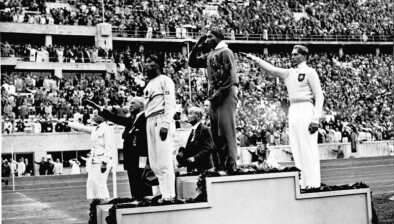James Milliken: Where is the boundary? Tom Wood, UKAD and uncertainty in UK anti-doping regulations

James Milliken
James Milliken of Belfast-based Carson McDowell discusses the National Anti-Doping Panel’s recent decision regarding cricketer Tom Wood.
The National Anti-Doping Panel (NADP), an independent tribunal responsible for adjudicating anti-doping disputes in sport in the UK, recently handed down a decision (ECB v Tom Wood, dated 24 June 2022) that highlights a concerning lack of certainty in the UK’s anti-doping rules and regulations.
This article examines the background to the decision and offers some conclusions on the state of the law in this area, with particular focus on the need to protect athletes’ interests by improving the clarity of the relevant rules and regulations.
Legal framework
The UK government “condemns doping in sport” and is committed to the pursuit of clean sport. The government considers, rightly, that doping is “fundamentally contrary to the spirit of sport”, while also being harmful to athletes and those who emulate and aspire to become athletes. The UK government has partnered with the World Anti-Doping Agency (WADA) to formally commit the UK to the pursuit of clean sport.
To this end, UK Anti-Doping (UKAD), an executive non-governmental public body sponsored by the Department of Culture, Media and Sport implements and manages anti-doping policy in the UK and works with athletes and national sports bodies to ensure compliance with the WADA Code. The government has worked with UKAD and the devolved administrations, as well as a variety of sports governing bodies, to develop the UK National Anti-Doping Policy, an extensive document setting out the rules and regulations that apply in this jurisdiction.
Enforcement of the Policy is handled by the NADP, which is established by the Policy and is funded by the Department. The NADP is not affiliated with UKAD and the bodies are entirely separate. UKAD is responsible for investigating, charging and prosecuting cases before the NADP.
Factual background
Tom Wood is a professional cricketer for Derbyshire County Cricket Club. Prior to the 2021 season, he primarily played for the Club’s 2nd XI. However, an unprecedented injury crisis and availability issues caused by Covid-19 led to Mr Wood being called up to play for the Club’s 1st XI on 17 occasions in 2021. In September 2021, UKAD personnel selected Mr Wood for testing (the first time he had been so selected in his career). In February 2022, Mr Wood was notified that he had tested positive for terbutaline, a substance prohibited by the Code. He was suspended from play and was formally charged by the England Cricket Board (ECB) for violations of its anti-doping rules (which align with the Code).
It came to light that Mr Wood has suffered from asthma since childhood and uses an inhaler containing terbutaline. For a player to be able to continue playing while using terbutaline, they would have to apply for a therapeutic use exemption (TUE). The time at which a player must apply for such an exemption depends on whether they are a 1st XI or 2nd XI player. The Policy requires that 1st XI players should apply for a TUE prior to competing in 1st XI cricket; 2nd XI players may apply retrospectively in the event that they test positive for a prohibited substance.
However, the Policy and the Code are unclear on when an application should be made by a 2nd XI player who makes unexpected appearances for the 1st XI. In this case, Mr Wood’s retrospective TUE application was rejected on the basis that the regime governing TUEs for 1st XI players applied and that Mr Wood should have applied for a TUE in advance of playing. The NADP held that the uncertainty regarding the definition of first- and second-team players meant that both Mr Wood and the Club were convinced that the rules for 2nd XI players applied. Accordingly, the NADP noted that Mr Wood bore no significant fault or negligence in regard to his positive result and reduced his suspension from two years to six months.
Conclusions
While the NADP was able to mitigate the consequences for Mr Wood in this case, the decision sheds light on a regime that provides little certainty for athletes and, by extension, their legal representatives. Where violations of anti-doping rules and regulations can lead to significant periods of ineligibility and considerable financial consequences in many cases, it is vital that such rules and regulations are clear, based on defined distinctions and easy for athletes (and those around them) to navigate and understand.
It remains to be seen whether this decision encourages UKAD to further improve the drafting of its regulations, which were last updated in April 2021, or whether athletes in the UK will continue to be subject to an unclear, uncertain and inconsistent regime. The concept of a level playing field is intrinsic to the value of sport and to the anti-doping regime currently in place. However, the regime itself must also be a level playing field that does not unfairly disadvantage athletes, many of whom stand to lose more than just money in the event of returning a positive test.

- James Milliken is a solicitor in the commercial team at Carson McDowell.







